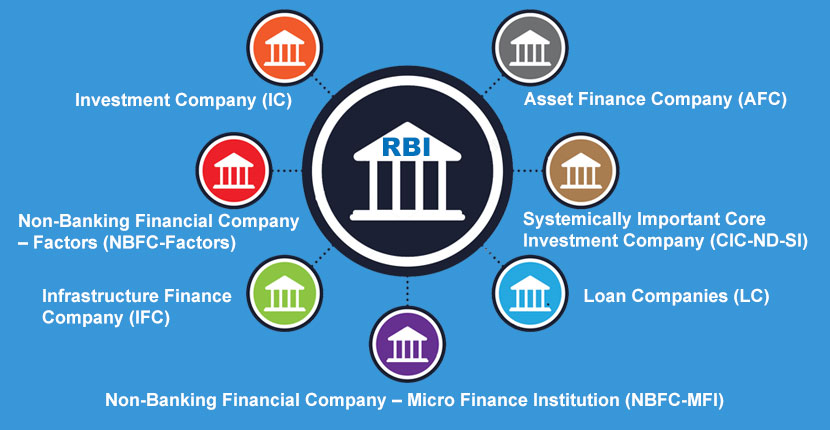Nonbank Financial Institutions: All You Need to Know
Introduction to Nonbank Financial Institutions
The nonbank financial institutions (NBFIs), also known as “shadow banks,” are essential components of the world financial system. These organizations play a crucial role in contemporary finance by offering various financial services that supplement traditional banks and, in some circumstances, compete with them. In this article, we will go into the specifics of nonbank financial organizations, looking at their roles, regulatory environment, and effects on the larger financial system.
Defining Nonbank Financial Institutions
A wide collection of financial intermediaries known as nonbank financial institutions work outside of the conventional banking industry. Although they are not banks in the traditional sense, they accomplish comparable goals by facilitating the movement of money across the economy. Investment funds, insurance firms, finance firms, and other organizations are included in the category of NBFIs. Let’s examine some typical NBFI kinds in more detail:

Investment funds are collective investment vehicles that pool investor capital and invest in a diverse range of assets, including stocks, bonds, and real estate. Hedge funds, exchange-traded funds (ETFs), and mutual funds are among examples.
Insurance firms: Insurance firms offer life insurance, health insurance, property and casualty insurance, and other insurance products to both individuals and corporations.
Finance Companies: Finance companies are experts in offering credit and loans to individuals and corporations. They frequently concentrate on particular industries, such as consumer lending or auto financing.
Money market funds are a popular option for investors looking for security and liquidity because they invest in short-term, low-risk securities.
Peer-to-Peer Lenders: Online lending platforms link borrowers with private or public lenders, upending established lending business structures.
Functions of NBFIs
NBFIs serve a number of crucial roles in the financial system, including:
Similar to conventional banks, NBFIs serve as a middleman between savings and borrowers. They collect money from depositors and distribute it to borrowers, enabling effective capital allocation.
Insurance firms are crucial for the transfer of risk from people and businesses to a bigger group of policyholders. This enables people to guard against unforeseen catastrophes and corporations to successfully manage risks.
Investment funds provide clients with a diversified portfolio of assets, lowering risk by giving them wide exposure to various markets and asset classes.
Credit Provision Peer-to-peer lending platforms and finance organizations provide credit to people and enterprises who might not have easy access to conventional bank loans. Money market funds offer investors a safe and liquid alternative to park their cash so they can earn interest while still having quick access to their money.
Regulatory Landscape
NBFIs are subject to different regulations depending on the country and type of institution. NBFIs frequently face less restrictive regulations than conventional banks do. To reduce systemic risks, regulatory agencies have tightened their monitoring of NBFIs since the global financial crisis of 2008. Here are a few crucial regulatory elements:
Systemically Important NBFIs: Due to their potential to present systemic hazards, several NBFIs have been recognized as Systemically Important Financial Institutions (SIFIs). To guarantee financial system stability, these SIFIs are subject to more stringent regulation and oversight.
Dodd-Frank Act: In the US, regulatory organizations including the Financial Stability Oversight Council (FSOC) and the Consumer Financial Protection Bureau (CFPB) now have jurisdiction over NBFIs as a result of the Dodd-Frank Wall Street Reform and Consumer Protection Act.
Basel III: To increase the resilience of systemically important NBFIs, Basel III set new capital and liquidity requirements.
State insurance commissions in the United States and equivalent bodies in other nations often regulate insurance companies. These authorities are in charge of market integrity, consumer safety, and solvency.
Securities Regulation: The operation, disclosure, and reporting obligations of investment funds, including mutual funds and ETFs, are governed by securities legislation.
Impact on the Financial System
NBFIs are essential to the stability and effectiveness of the financial system. However, their actions also highlight some crucial questions:
Diversification of Funding Sources: By offering other funding options, NBFIs help the economy become less dependent on conventional banks. By lowering the systemic risks linked to concentrated banking systems, this diversity can improve financial stability.
Risk Transmission: NBFIs can assist in the effective distribution of risk, but they can also pass risk on to the larger financial system. An asset fire sale, for instance, might result from a crisis in the asset management sector, which would have an impact on markets and investors.
Regulatory arbitrage: Less stringent regulations for some NBFIs may encourage financial institutions to move away from traditional banking, thereby circumventing prudential regulations designed to protect the system.
Financial innovation is frequently driven by NBFIs, creating competition and giving consumers additional options. Rapid innovation can, however, potentially outstrip regulatory control, posing risks related to unproven products and business strategies.
Conclusion
The nonbank financial sector is both diversified and essential to the world’s financial system. They perform a variety of tasks, such as risk transfer, intermediation, and funding source diversification. Even if they promote innovation and offer necessary services, NBFIs also present regulatory difficulties and run the danger of transferring risks to the larger financial system. In today’s complex financial environment, regulators and policymakers continue to face a significant challenge in finding the correct balance between promoting innovation and upholding financial stability. NBFIs will undoubtedly play a bigger part in determining the future of the financial sector as it continues to develop.


